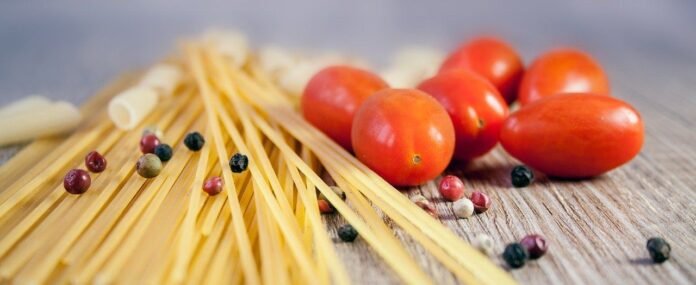Cooking pasta may seem like a straightforward task, but achieving the perfect texture and flavor requires more than just boiling water. Whether you’re a beginner or a seasoned cook, following some expert tips can take your https://me-encantas.com/2020/02/18/los-mejores-consejos-para-cocinar-pastas to the next level. In this article, we’ll dive into the best practices for cooking pasta, inspired by the insights from the post on Me-Encantas, and provide step-by-step guidance to help you master this beloved staple.
1. Choosing the Right https://me-encantas.com/2020/02/18/los-mejores-consejos-para-cocinar-pastas
Not all pasta types are created equal, and selecting the right shape is key to making your dish successful. There are over 600 different https://me-encantas.com/2020/02/18/los-mejores-consejos-para-cocinar-pastas shapes available, each suited for particular sauces or cooking methods.
Long Pasta: Ideal for thin, smooth sauces. Examples include spaghetti, fettuccine, and linguine, which pair beautifully with simple olive oil or cream-based sauces.
Short Pasta: Excellent for chunkier, heartier sauces. Rigatoni, penne, and fusilli are great for capturing thicker sauces that contain meat, vegetables, or cheese.
Stuffed Pasta: Ravioli, tortellini, and other stuffed pastas work best with light, brothy sauces or butter to highlight their fillings.
Specialty Pasta: Gluten-free, whole-wheat, or egg-based https://me-encantas.com/2020/02/18/los-mejores-consejos-para-cocinar-pastas have their own cooking requirements, so be sure to adjust boiling time and check for doneness accordingly.
2. Using the Right Amount of Water
One of the most important factors when cooking pasta is the amount of water you use. To ensure the pasta cooks evenly and doesn’t stick together, it’s recommended to use about 4-6 quarts of water for every pound of https://me-encantas.com/2020/02/18/los-mejores-consejos-para-cocinar-pastas.
- Bring to a Rapid Boil: Make sure the water is boiling vigorously before adding the pasta. This ensures the pasta will cook evenly from the start.
- Salt the Water Generously: Don’t skimp on the salt! Adding salt (1-2 tablespoons) to the boiling water enhances the flavor of the pasta and helps the sauce cling better to it. Keep in mind that the water should taste like the sea, which might seem like a lot of salt but is essential for flavor.
3. Cooking Time and Stirring
Knowing when to cook the https://me-encantas.com/2020/02/18/los-mejores-consejos-para-cocinar-pastas and for how long is critical for achieving the ideal “al dente” texture. Here’s how to manage it:
Follow Package Instructions, but Trust Your Instincts: While the cooking time on the package is a good starting point, always taste the pasta before draining. “Al dente” means the pasta should be tender but still slightly firm when bitten.
Stir Frequently: Stir the pasta in the first couple of minutes after adding it to the water to prevent it from sticking. Afterward, occasional stirring is enough to keep the pasta separate.
Testing for Doneness: Instead of relying solely on time, test the pasta a minute or two before the recommended cooking time ends. Taste a piece to check for firmness and adjust accordingly.
4. Reserving Pasta Water
One often-overlooked step in https://me-encantas.com/2020/02/18/los-mejores-consejos-para-cocinar-pastas is reserving some of the pasta water before draining. Pasta water is a secret weapon for creating delicious sauces.
Why Pasta Water is Important: The water in which the pasta is cooked contains starch that has been released during boiling. This starchy water can be used to thicken sauces and help them adhere to the https://me-encantas.com/2020/02/18/los-mejores-consejos-para-cocinar-pastas.
How to Use It: Before draining, scoop out about a cup of the pasta water. Add it to your sauce gradually to achieve the desired consistency and richness. It also helps marry the sauce to the pasta.
5. Avoid Overcooking the Pasta
Overcooked pasta can ruin an otherwise perfect meal. To avoid mushy pasta, it’s essential to keep an eye on the clock and check the texture frequently.
Shock the Pasta with Cold Water?: Many cooks wonder if they should rinse pasta under cold water to stop it from cooking further. While this can be useful for pasta used in cold salads, it’s not recommended for hot dishes, as rinsing removes the starches that help sauces cling to the pasta.
Tossing with Oil?: Another common misconception is tossing cooked pasta with olive oil to prevent sticking. While this can be helpful if you’re storing the pasta to use later, avoid doing this if you plan to toss the pasta immediately with sauce, as it can prevent the sauce from coating the noodles properly.
6. Pairing Pasta with the Right Sauce
The type of pasta you choose can dramatically affect how well it pairs with different sauces. Here’s a quick guide to matching https://me-encantas.com/2020/02/18/los-mejores-consejos-para-cocinar-pastas with the best sauce:
- Spaghetti or Linguine: Works well with light, oil-based sauces like aglio e olio (garlic and oil) or marinara.
- Fettuccine or Tagliatelle: Ideal for richer, creamier sauces like Alfredo or Bolognese.
- Penne or Rigatoni: Perfect for chunky sauces with vegetables, sausage, or cheese, as their ridges capture more sauce.
- Ravioli or Tortellini: Often paired with a light butter or sage sauce to highlight the filling.
7. Finishing Pasta in the Sauce
An essential step that many home cooks overlook is finishing the pasta in the sauce. Once the pasta is cooked and drained, toss it directly into the sauce and let it simmer together for a minute or two. This allows the pasta to absorb the flavors of the sauce and ensures the dish comes together harmoniously.
Add the Reserved Pasta Water: As mentioned earlier, use the reserved pasta water to help adjust the thickness of the sauce and make it cling better to the pasta. Add the water a little at a time while tossing the pasta with the sauce.
Finish with Fresh Ingredients: Once the pasta has absorbed the sauce, finish the dish with fresh ingredients like herbs, grated cheese, or a drizzle of high-quality olive oil for extra flavor and a beautiful presentation.
8. Storing and Reheating Leftover Pasta
If you have leftover https://me-encantas.com/2020/02/18/los-mejores-consejos-para-cocinar-pastas, storing and reheating it properly is crucial for maintaining its quality.
Storing Pasta: After cooling, place the pasta in an airtight container in the refrigerator. If you plan to store it for more than a day, lightly toss the pasta with a bit of olive oil to prevent it from sticking.
Reheating Pasta: To reheat pasta, avoid using the microwave, as it tends to dry out the noodles. Instead, reheat the pasta in a pan with a bit of olive oil or butter and a splash of reserved pasta water (or regular water) to keep it moist.
Freezing Pasta: If you have more pasta than you can eat in the next few days, consider freezing it. Simply portion out the pasta into freezer-safe containers, and when you’re ready to eat it, thaw it in the fridge overnight before reheating.
9. Common Pasta Cooking Mistakes to Avoid
To achieve the https://me-encantas.com/2020/02/18/los-mejores-consejos-para-cocinar-pastas every time, avoid these common pitfalls:
- Undersalting the Water: Not adding enough salt to the cooking water will result in bland pasta.
- Overcrowding the Pot: Cooking too much pasta at once can cause uneven cooking and sticking. Stick to the recommended water-to-pasta ratio.
- Not Stirring: Stirring is key in the first few minutes of cooking to prevent the pasta from sticking together.
- Cooking in Advance: Pasta should be cooked as close to serving time as possible. If you cook it in advance, it can become mushy or lose its texture.
- Skipping the Sauce Toss: Simply pouring sauce over pasta isn’t enough. Always toss the pasta with the sauce in a pan to ensure even coating.
10. Creative Pasta Recipes to Try at Home
Now that you know the fundamentals of cooking perfect pasta, here are a few creative pasta recipes you can try at home:
1. Classic Spaghetti Aglio e Olio
A simple yet flavorful dish made with garlic, olive oil, red pepper flakes, and parsley, this recipe is perfect for a quick, easy meal.
2. Fettuccine Alfredo with Chicken
Indulge in creamy, cheesy goodness with fettuccine Alfredo, paired with grilled chicken for added protein.
3. Pesto Penne with Sun-Dried Tomatoes
A fresh take on pasta with a basil pesto sauce, this dish is packed with the flavors of garlic, pine nuts, and sun-dried tomatoes.
4. Creamy Spinach Tortellini
This stuffed pasta is tossed in a creamy spinach sauce, making it a rich and comforting meal that’s easy to prepare.
Conclusion
Cooking pasta to perfection requires a few key techniques and attention to detail, but once mastered, it opens the door to countless delicious meals. By following these tips, you can elevate your https://me-encantas.com/2020/02/18/los-mejores-consejos-para-cocinar-pastas and enjoy authentic Italian flavors in the comfort of your own home. Whether you’re whipping up a simple weeknight dinner or impressing guests with a gourmet pasta creation, these guidelines will ensure your pasta turns out just right every time.

